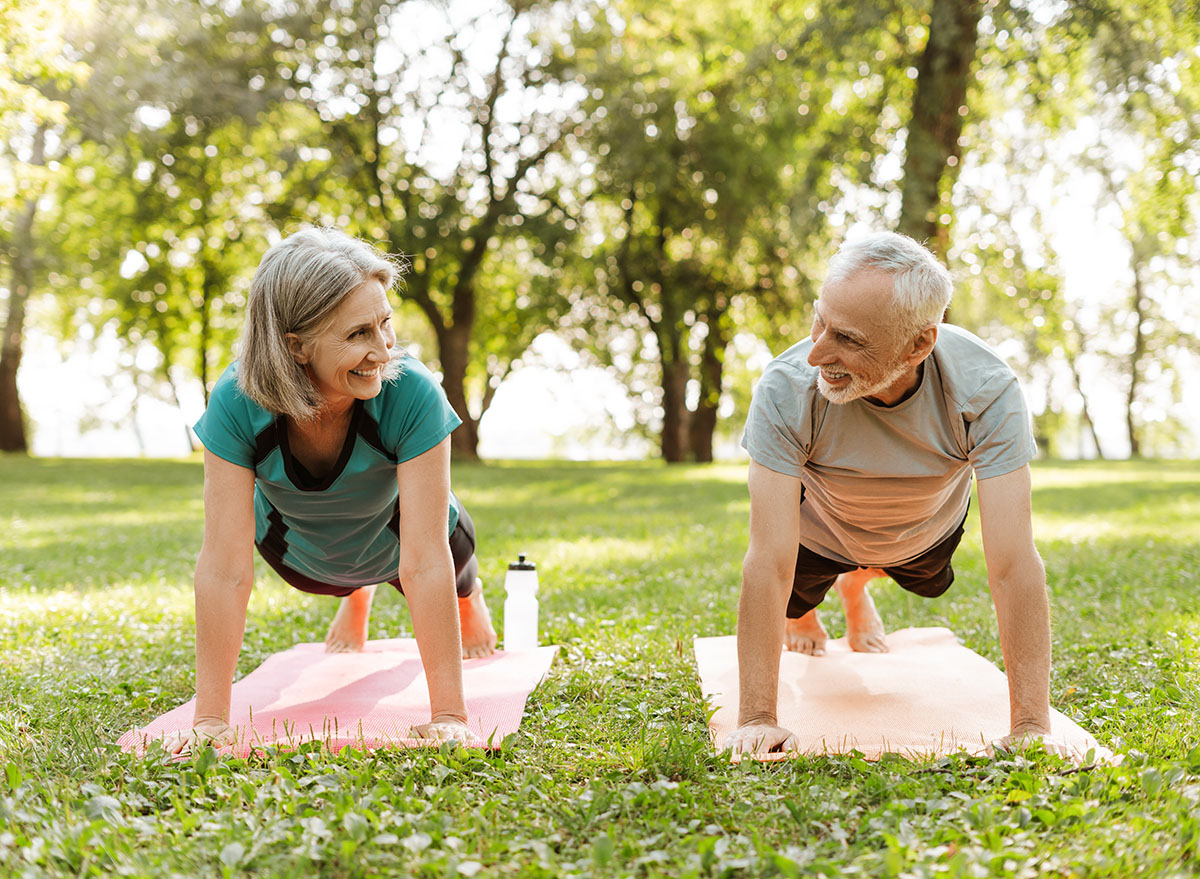Over 50? If You Can Do These 4 Drills, Your Body Strength Is Elite

Developing elite body strength often becomes an afterthought when we hit the big 5-0. When the gym no longer becomes a place to chase personal records or lift the heaviest weights, the focus shifts to building lasting strength that keeps your body moving efficiently, supports your joints, and gives you the power to handle anything life throws your way. The ability to perform the following drills with control and confidence is a clear sign that your strength, stability, and coordination are operating at an elite level.
These movements highlight how well your body can stabilize, generate force, and maintain alignment under pressure. They challenge your balance, coordination, and total-body control, revealing new functional levels of strength earned through consistent, purposeful training over the years.
Here are four drills that define elite body strength after 50, along with how to use them to stay robust, mobile, and resilient for decades to come.
Drill #1: Single-Leg Sit to Stand
Standing up from a seated position on one leg simultaneously measures balance, leg strength, and control. It challenges your glutes, hamstrings, quads, and stabilizers to coordinate smoothly, an attribute that most people lose with age. If you can complete several controlled reps per leg, you’ve maintained the kind of strength and balance that protect you from falls and improve performance in nearly every activity.
Muscles Trained: Glutes, quadriceps, hamstrings, calves, core
How to Do It:
- Sit on a sturdy chair or bench with your feet flat on the floor.
- Lift one foot slightly off the ground.
- Drive through your planted foot and push your hips forward to stand tall.
- Lower back down slowly under control until you’re seated again.
- Repeat for the set number of reps, then switch legs.
Passing Score: Perform 8–10 controlled reps per leg without losing balance.
Best Variations: Assisted single-leg sit to stand, box pistol squat, TRX single-leg squat
Form Tip: Keep your knee aligned with your toes and your chest upright throughout the movement.
Drill #2: Pushup to Plank Hold
This combination tests upper-body power, core endurance, and total-body stability. It demands strength through your chest, shoulders, triceps, and deep core muscles while reinforcing posture and control. It’s a marker of how well your upper body and midsection can work together under fatigue.
Muscles Trained: Chest, shoulders, triceps, core.
How to Do It:
- Start in a high plank position with your hands under your shoulders.
- Lower your body until your chest nearly touches the floor.
- Push yourself back to the top of the pushup.
- Hold the plank for 5 seconds, keeping your core tight.
- Repeat for the complete set of reps.
Passing Score: Complete 12 pushups with a 5-second plank hold at the top of each rep.
Best Variations: Incline pushup, knee pushup, hand-release pushup
Form Tip: Keep your hips level and your body in a straight line from head to heels.
Drill #3: Farmer’s Carry
Carrying heavy loads while maintaining posture and stability is one of the best real-world strength tests. The farmer’s carry works your grip, shoulders, core, and legs in unison. If you can walk with a strong posture and control while holding significant weight, your body has retained exceptional strength and endurance.
Muscles Trained: Forearms, shoulders, traps, core, glutes, hamstrings, calves
How to Do It:
- Stand tall, holding a dumbbell or kettlebell in each hand.
- Engage your core and pull your shoulders back.
- Walk forward in a straight line for 30–40 seconds.
- Rest briefly, then repeat for the next set.
Passing Score: Carry your body weight (half in each hand) for at least 40 seconds.
Best Variations: Single-arm carry, suitcase carry, overhead carry
Form Tip: Keep your ribs down and avoid leaning to either side.
Drill #4: Dead Hang from a Pull-Up Bar
The dead hang is a pure grip and shoulder endurance test. It challenges the muscles that stabilize your shoulders, upper back, and forearms while decompressing your spine. Being able to hang for a long time proves that your upper-body strength, grip endurance, and shoulder integrity are well above average.
Muscles Trained: Lats, shoulders, forearms, grip, core
How to Do It:
- Grip a pull-up bar with your palms facing away from you.
- Let your body hang fully extended with your arms straight.
- Keep your core tight and shoulder blades slightly engaged.
- Hold for as long as possible.
Passing Score: Hold for 45–60 seconds without slipping or swinging.
Best Variations: Mixed-grip hang, towel grip hang, flexed-arm hang
Form Tip: Pull your shoulder blades down to keep the upper back engaged.
The Best Training Habits to Maintain Elite Strength After 50

Reaching elite strength after 50 is about what you do every day to preserve the muscle, mobility, and stability you’ve earned through life. The proper habits keep your body strong, your joints healthy, and your performance consistent for decades to come. Small, deliberate choices in how you train, fuel, and recover make all the difference between simply staying active and continuing to thrive with power and precision well into your later years.
- Train three to five days per week: Mix resistance, balance, and mobility work.
- Prioritize recovery: Sleep, hydration, and mobility work are essential for joint health and muscle repair.
- Eat protein-rich meals: Support muscle maintenance with lean meats, fish, eggs, or plant-based protein sources.
- Stay active daily: Walk, hike, or cycle between workouts to keep your metabolism and energy high.
- Challenge your balance: Add single-leg or stability work weekly to improve coordination and reduce injury risk.